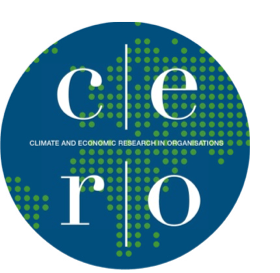Åtgärder & implementering
CERO stödjer utformning av en optimal handlingsplan som styr mot de mål som organisationen formulerat. CERO-analysen är anpassad att fungera som beslutsunderlag för workshops där medarbetare och ledning enas kring vilka åtgärder som är optimala utifrån rådande förutsättningar och medarbetarnas preferenser.
Hur uppnås klimatekonomiska lösningar inom organisationen?
Reskostnader och utsläpp hänger ihop. Analysen syftar till att identifiera de lägst hängande frukterna först, med störst ekonomisk besparingspotential. Efter att målet är definierat inleds arbetet med en kartläggning av utsläpp och kostnader från organisationens tjänsteresor och arbetspendling i dagsläget. Statistisk modellering och cost-benefit analyser ligger till grund för att ta fram beslutsunderlaget.
The CERO process
A vital step in CERO analysis is to transform emission- and cost-reduction targets into tailor made target scenarios, expressing actual numbers of employees, potentially choosing more resource-efficient travel alternatives, and adherent economic savings. Research show that this is more comprehensible and attainable from a company travel policy perspective, facilitating action plan formulation, workshop activities, decision making, and follow-up routines, all of which should be part of the process.
Formulating travel plans for meeting future emission- and cost-reduction targets involves more than just providing company leadership with an accurate basis for decision making. CERO has developed a workshop format that aims to foster consensus and mutual understanding regarding the process of selecting from a “smorgasbord” of efficiencies. Construction and prioritization of policy sets should ideally involve all decision makers in the planning process. The CERO workshop uses a specifically designed software tool that guides the group of decision makers through the vital steps towards a well-adapted travel plan.
The quite “fuzzy” emission- and cost-reduction targets are transformed into a tailor-made “smorgasbord” of potential travel efficiencies in the organisation. Based on a comprehensive cost–benefit analysis of the alternative strategies offered in the smorgasbord, together with a statistical analysis of decisive employee preference factors, the economic payoff, employee acceptance, and various barriers to and incentives for alternative travel efficiencies can be determined and used in identifying an “optimal” set of compound strategies for both commuting and business-trip efficiencies consistent with target achievement. CERO is applied in over 30 large companies, municipalities, county councils, and other organisations in Sweden. In total, CERO influences travel policies affecting more than 100,000 employees.
CERO is now implemented in more than 80 organisations. To learn from best practice and to spread good examples, CERO incorporates a specific benchmarking system that lets organisations make internal and external emission and cost-efficiency comparisons. This has proven to be an efficient way to trigger positive competitiveness between organisations. Naturally, benchmarking comparisons are mainly useful between organisations that are relatively similar in organisational structure, geographical location, line of business, and other organisational characteristics. The benchmarking technique is also used to spur the change-process internally, by analysing differences between departments and divisions within the same organisation.
Besides the pure cost-cutting potential, there are several additional reasons why organisations should consider setting up target-oriented travel plans:
- Be foresighted – prevent risks associated with unstable energy prices and stricter/uncertain travel efficiency demands in the future.
- Improve public relations and raise the standard for environmental audits by incorporating profound emission/cost-reduction strategies for employee travel.
- Provide employees with good accessibility and communication alternatives in order to attract efficient and competent staff.
- Alleviate employee stress and improve their health conditions, indirectly affecting both work efficiency and number of sick days.
- Reduce loss of employee working hours (improve productivity) in cases in which it is possible to change travel mode from, for example, driving or flying to video conference.

